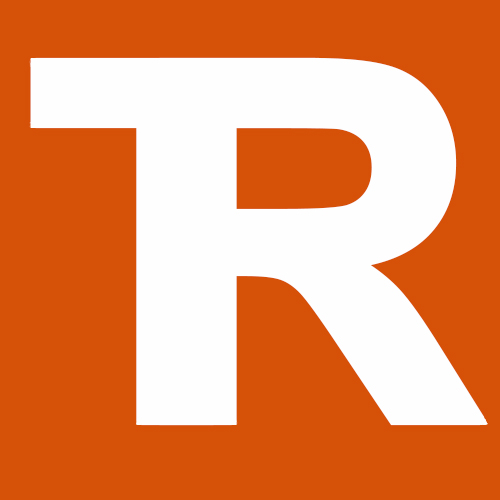Pride Month is long over, companies. Can We Talk About Real Inclusion Now?

Some folks treat coming out like it’s a TED Talk. I’m not here for that.
I'm part of the rainbow community. And I have been for years now. And honestly? That’s just one tab open in my mental browser—right next to “Kubernetes debugging,” “awk cheatsheet,” and “Did I break prod?”
Identity ≠ Headline
I’m a developer. A teammate. Every so often a socially awkward nerd. The go-to person for that weird edge case no one else wants to touch or that specific issue.
My queerness? It’s part of the package, but it’s not my brand, my whole personality.
I don’t need rainbow sprinkles on every corporate logo. I don’t need rainbow emojis on every message or a parade in the office. Likewise, I’d rather just do my job without being treated like a curiosity.
Being queer isn’t my core personality; it’s just one part of me. Like preferring dark mode or having strong opinions about coffee.
What Actually Matters at Work
At the companies I’ve worked at, I’ve been lucky: no odd questions, no sideways comments, no awkward HR trainings written by someone who clearly hasn’t met a queer person.
And that’s undoubtedly how it should be.
Respect, trust, and a culture where you can show up as yourself and focus on the work, that’s the bar. We should expect nothing less.
Why I Say “Rainbow Community”
You’ve probably seen a whole alphabet soup of terms—LGBTQIA+, 2SLGBTQ+, and so on. And while they all try to be inclusive, they can feel… sterile. Or like you’re reading a legal disclaimer. And what's the point of an acronym that makes it harder to speak out?
I prefer “rainbow community.”
It’s friendlier, more human, and still gets the point across. It feels like it includes everyone without needing a glossary. Plus, it actually sounds like something you’d want to be part of—colorful, diverse, not a mouthful of acronyms.
Words matter. And sometimes, simplicity invites more people in.
The Reality Behind the Rainbow
Being part of the rainbow community still comes with challenges. Even here in Cologne, there are places where I can’t hold my partners hand without risking unwanted attention or even risking unprovoked violence. I’ve been assaulted or stared at more times than I care to count, just for being assumed gay.
And it’s not just that. There are whole countries I may never safely visit, simply because being queer there could land me in jail, or worse.

Pride Month and parades shine a spotlight on these issues. Increasingly, the parades have drifted away from their roots as demonstrations for rights. They’ve become parties, commercialized and polished to the point where the original message is getting lost.
For many people in rural areas, their only view of the rainbow community comes from those parades, often focused on folks in flamboyant or “weird” outfits. Those images, seen once or twice a year, end up shaping what they think queerness looks like. Spoiler: it’s not the complete story.
Meanwhile, recent political developments feel like the clock is ticking backwards. Inclusion and diversity seem to be sacrificed for the insecurity of a few.
Normalize, Don’t Idolize
I don’t need a trophy for existing. I don’t need to be the poster child for diversity, either.
What do I want? To be treated like everyone else. Not less. Not more. Just… normal.
Sometimes companies swing so hard toward “celebrating diversity” that they end up making things weird. Like inviting you to speak on a panel you never asked for. Or suddenly asking for your “queer perspective” on a product that has nothing to do with identity.
And let’s not ignore the rainbow-washing:
Companies that are usually silent—or even actively against queer rights—suddenly slap a rainbow on their logo every June like it’s a subscription box.
Political parties that drag their feet on trans rights and same-sex marriage somehow find the time (and budget) to show up at pride parades with big smiles and branded balloons. For example, CDU, you really showed up… at least in June.

Inclusion isn’t performance. It’s culture. It’s everyday stuff, like respecting people, not making assumptions, and not turning identity into a campaign.
Allyship Without the Drama
Being an ally isn’t about grand gestures. You don’t need to wear a rainbow pin or make a speech. Just don’t make it weird.
Here’s the short version:
- Respect people’s names, pronouns, and boundaries.
- Don’t ask invasive questions you wouldn’t ask a straight person.
- Speak up when something’s off, even if no queer person is around to hear it.
- Listen more than you talk.
You don’t need a “queer friend” to prove you’re supportive. Just be decent. It’s not that hard.
Sometimes when I tell people I’m pansexual, they try to fit me into a different label based on who I’m dating, or just ignore it altogether. It’s something I, and many others in the community, face more often than I’d like to admit. If you’re genuinely interested, please respect the person and their identity. And if you don’t care, that’s totally fine too!
And hey, it’s okay not to have a strong opinion on all this. As long as you’re not actively hating for no reason, I’m fine with that.
Allyship isn’t a performance; it’s how you act when no one’s watching.
Keep It Real
So yeah. Pride Month ended, the logos went back to normal, and guess what? I and many other people out there didn’t disappear.
Being queer isn’t a phase, a brand, or a checkbox. It’s just me, and many others out there—showing up, doing my job, going grocery shopping, eating out, and yeah, doing all the boring normal stuff like everyone else.
If you want to make a difference, start by treating people like people. No glitter needed.
That’s it.

